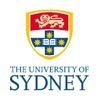Explore all the information on
Minerals in poultry nutrition
Minerals in poultry nutrition are typically classified as macro- or micro-minerals, depending on the levels needed in the diet. The macro-minerals include calcium, phosphorus, chlorine, magnesium, potassium, and sodium. Requirements for the macro-minerals are typically expressed as a percentage of the diet, while the requirements for the micro-minerals are stated as parts per million. Although the quantities required for micro-minerals are lower than for macro-minerals, they play an essential role in the body's metabolism. The micro-minerals include copper, iodine, iron, manganese, selenium, and zinc.
I. INTRODUCTION The laying hen has a considerable requirement for dietary calcium (Ca) and phosphorus (P) to support optimum egg production, egg quality and other physiological processes. In particular, a high intake of Ca ranging from 4 to 4.5% of the diet is considered important as the laying cycle progresses from early to late lay to achieve optimum egg number and egg shell quality. A capacity for birds to increase Ca intake from a separate Ca source as dietary Ca levels diminish...
Comments : 0
Recommendations: 0
I. INTRODUCTION It has been shown that FP occurs in all housing systems, from conventional cages, to barn and free range systems (Green et al., 2000). However, there is a lack of data available on the true prevalence of FP in commercial free-range layer farms in Australia. In a survey in the UK, 65% of flocks showed FP during lay as reported by free-range farmers but, when the same flocks were assessed by researchers, prevalence reached 89% and 69% at 25 weeks, and 73% and 86% at 40...
Comments : 0
Recommendations: 0
I. INTRODUCTION Mineralization of the chicken embryo requires calcium (Ca) and phosphorus (P)’ macro minerals supplied to the embryo by eggshell + yolk and yolk, respectively. Towards the end of incubation and after hatch, phosphorus in the residual egg yolk is minimal (Li et al., 2014). Yolk calcium reserves at hatch, however, are similar (Yair and Uni 2011) or even higher (Richards and Packard 1996) compared to eggs at setting, as a result of eggshell calcium being...
Comments : 0
Recommendations: 0
Zinc (Zn) is a fundamental trace mineral for growth, development and health in broilers. The form of Zn has a direct impact on its biological function in broiler chickens (Bun et al., 2011). Hydroxy forms, Zn hydroxychloride (IBZ) can potentially offer advantages over other inorganic and organic sources. This study was designed to determine the optimum level of IBZ in broiler diets, by evaluating the effect of different levels on growth performance and zinc deposition in tissues. A total of...
Comments : 0
Recommendations: 0
It has been demonstrated that the phosphorus (P) requirements of modern broilers are significantly lower than historical industry practice (Li et al., 2017). However, it is also apparent from these studies that the P requirement is dependent on the dietary calcium (Ca) concentration and whether the diet is supplemented with phytase. Most of the contemporary research has been conducted in the starter phase, but this feeding trial has been conducted in the finisher phase (days 22- 49) to...
Comments : 0
Recommendations: 0
Adnan Alrubaye (University of Arkansas) explains this disease, also known as BCO Lameness. He comments on different mitigation methods and his research collaboration with companies, in this Engormix interview....
Comments : 9
Recommendations: 0
Beak trimming can have serious consequences on hen welfare, health and production. However, compared to hot blade trimming, the infra-red technique has resulted in more uniform beak length and symmetry (Dennis et al., 2009). Pecking stones (Analysed Values: 20.50% calcium, 4.30% phosphorus, 5.0% sodium and 2.50% magnesium) have been used in Europe and are reported to blunt hens’ beaks and alter pecking behaviour (Glatz and Runge, 2017). The objective of the current study was to...
Comments : 0
Recommendations: 0
In a 20,000-bird BV 300 flock (20 weeks of age), we recently observed ~60 birds/day sitting down after egg laying, showing classic signs of Cage Layer Fatigue (CLF)....
Comments : 0
Recommendations: 0
While the breeding programs of commercial meat chickens select birds with robust legs (Davis, 2015), poor leg strength and reduced locomotion are frequently observed in late stages of growth. We have previously reported that lower egg shell temperatures during early incubation, which delays chick hatch time, increases bone ash (BA) (Muir and Groves, 2017). Observations from our research and the literature (e.g. Ulmer-Franco et al., 2010) suggest that maternal breeder flock age may influence...
Comments : 0
Recommendations: 0
Growth promoting effects of zinc bacitracin, Bacillus-based probiotics and a blend of Yucca and Quillaja saponin in broilers have been well documented (Engberg et al. 2000; Cheeke, 2009; Jeong and Kim, 2014). These in-feed additives are commonly used in broiler diets but their effects at different dietary crude protein (CP) concentrations remain unclear. This study was conducted to study the effect of these additives when added to low and high-protein diets on performance and caecal...
Comments : 0
Recommendations: 0
1 Introduction The rising number of recently reported human illnesses with bacterial infections resistant to multiple antibacterial agents has become a fundamental concern in recent years [1, 2]. This phenomenon has become a serious concern with regard to the emergence of antibiotic-resistant bacteria called “superbugs” [3, 4], especially when considering that humans only started using antibiotics in the past century with Sir Alexander Fleming’s discovery of...
Comments : 2
Recommendations: 1
It has been shown that an ileal digestible phosphorus (IDP) value of 2.0 g/kg can support optimum bird performance (Li et al., 2017). However, the relationship of this value to dietary Ca concentration and phytase supplementation is still unclear. The aim of this study was to further clarify these interrelationships. Four hundred, day old, Ross, male broiler chicks were fed experimental diets based on wheat, sorghum, canola meal, soybean meal and meat and bone meal. The diets contained...
Comments : 0
Recommendations: 0
1. Introduction Aflatoxin B1 (AFB1), a toxic metabolite produced by Aspergillus flavus and Aspergillus parasiticus, is one of the most potent naturally occurring carcinogens [1]. It poses significant risks to animal health and productivity, particularly in poultry, where the contamination of feed is a prevalent issue [2]. Broiler chickens are highly susceptible to the adverse effects of AFB1 due to their rapid growth rates and high feed intake [3]. Recent studies have...
Comments : 0
Recommendations: 0
Meat and bone meal (MBM) is a valuable source of protein, calcium and available phosphorus for broiler diets (Anwar et al., 2016). The use of MBM in broiler diets at levels above 50 g/kg minimizes the need for inclusion of inorganic P, thus reducing feed cost. Potential indigestibility of protein in MBM (Kim et al., 2012) may act as a predisposing factor for necrotic enteritis (NE). Increased production of nitrogenous bacterial metabolites including amines and ammonia in the hindgut may...
Comments : 0
Recommendations: 0


Effect of <i>Bacillus</i>-based probiotics on improving the intestinal health and performance under enteritis challenge in broiler chickens
Suggested link
Phosphorus (P) is a non-renewable resource and will become increasingly scarce during this century. Nevertheless, excessive usage of P in the poultry industry results in additional costs and also increased P excretion, causing eutrophication and land erosion. Tackling these problems requires better understanding of P bioavailability and the P requirements of the bird. Furthermore, the evolution of phytase technology has necessitated a reevaluation of P and calcium (Ca) requirements for...
Comments : 0
Recommendations: 0
Editorial
This month, our comprehensive search captured 74 new publications in poultry nutrition from 61 journals (March 10th to April 10th, 2025, Web of Science), featuring top contributions from Poultry Science (6), Frontier in Veterinary Science(6), Animals (5), Veterinary Medicine and Science (5), etc. ( Download the complete list...
Comments : 0
Recommendations: 0
I. INTRODUCTION With the current genetic focus being on longer laying cycles, there is a need to look for new ways of improving calcium metabolism in laying birds which are prone to osteoporosis in the latter stages of lay (Bain et al, 2016). Calcium pidolate (a highly soluble, absorbable salt with excellent gastrointestinal tolerance) has been around for 10-15 years in the commercial sector of the egg industry. Existing evidence suggests that this supplement has beneficial effects...
Comments : 0
Recommendations: 0
Hello. What do you think about the DEB efficiency of the minerals used in the ration in the calculation of DEB (Na+K-Cl-S) in feeds? ...
Comments : 0
Recommendations: 0
.jpg&w=3840&q=75)

Candidate Genes Associated with Survival Following Highly Pathogenic Avian Influenza Infection in Chickens
Suggested link
1. Introduction Trace minerals such as zinc (Zn), manganese (Mn), and copper (Cu) play critical roles in bone formation and eggshell quality [1,2]. Zn supports bone and cartilage integrity by facilitating collagen formation and hydroxyapatite crystallization [3], while Mn contributes to bone development by activating enzymes involved in synthesizing mucopolysaccharides in bone cartilage [4,5]. Cu is essential for maintaining bone tensile strength by aiding in the cross-linking of...
Comments : 2
Recommendations: 4
The liver is the largest gland of the body and an accessory organ of the poultry digestive system. The liver involves in a wide range of functions including the fat mobilization and metabolism of carbohydrates, proteins, fats, vitamins and...
Comments : 18
Recommendations: 14








.jpg&w=3840&q=75)
















